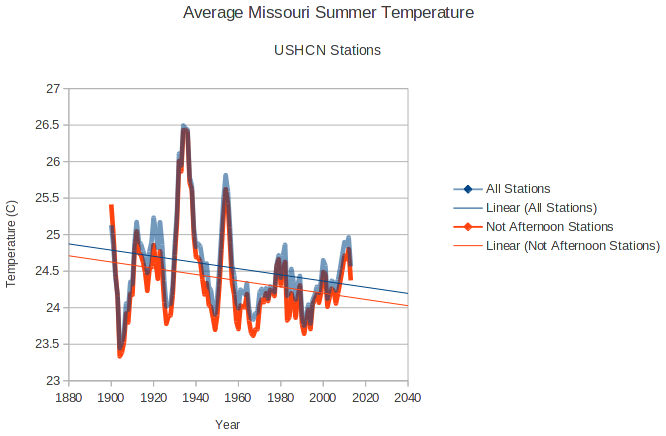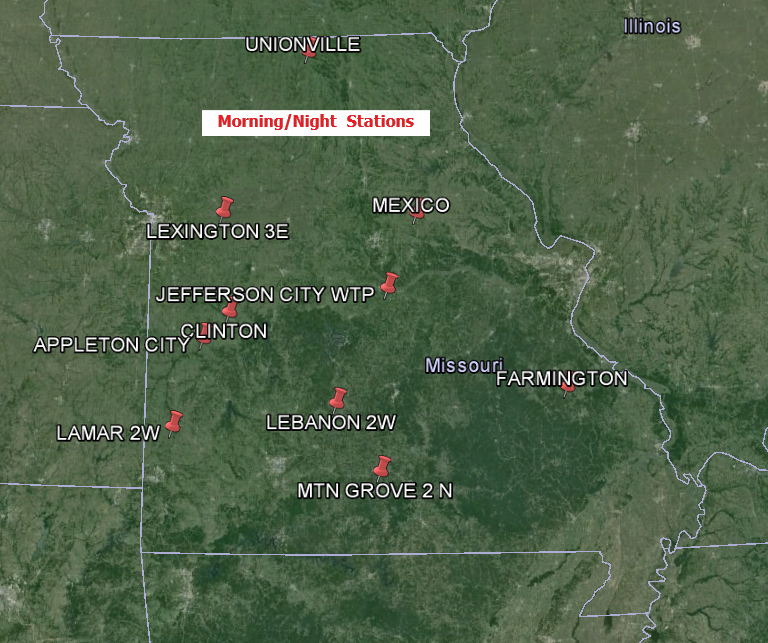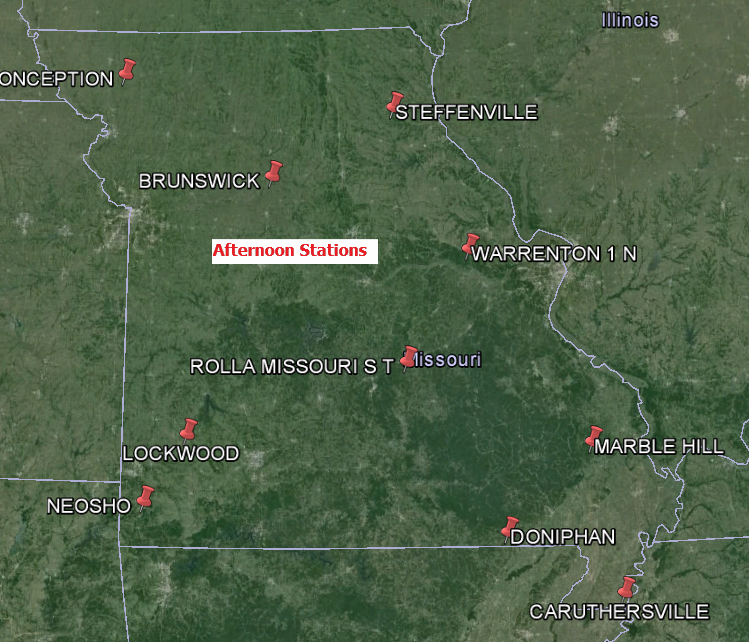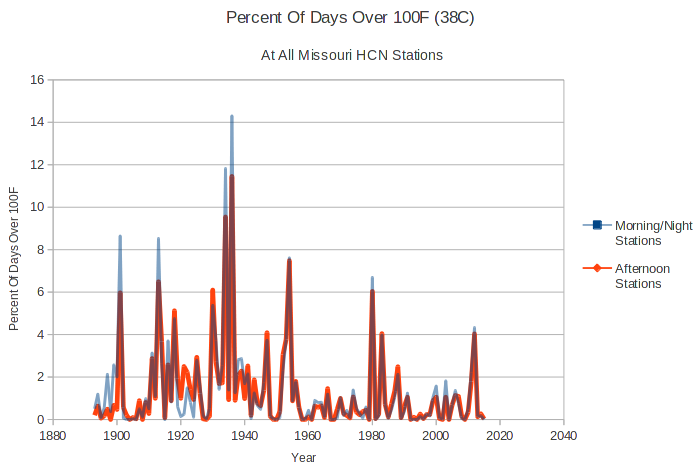One of the primary excuses used by NOAA to hide the decline in the US temperature record, is Time Of Observation Bias (TOBS.) The theory is that people used to be incredibly stupid and reset their max/min thermometers only once per day – in the afternoon. This would cause double counting of some high temperatures, and result in historical temperatures which were too high.
This theory is easy to test. Half of the stations in Missouri took their min/max readings during July 1936 in the afternoon, and the other half took them at morning or night during that month. I separated those groups out and found that it makes no difference to summer temperature trends.
The group of morning/night stations has been cooling at almost exactly the rate as the group of all stations. Also note that summer temperatures in the 1930’s are essentially identical in the two groups. No matter what tricks NOAA uses to hide the decline in US temperatures, it doesn’t change the facts.
Morning/night stations.
APPLETON CITY MO USC00230204 CLINTON MO USC00231711 FARMINGTON MO USC00232809 JEFFERSON CITY WTP MO USC00234271 LAMAR 2W MO USC00234705 LEBANON 2W MO USC00234825 LEES SUMMIT REED WR MO USC00234850 LEXINGTON 3E MO USC00234904 MEXICO MO USC00235541 MOBERLY MO USC00235671 MTN GROVE 2 N MO USC00235834 SPICKARD 7 W MO USC00237963 UNIONVILLE MO USC00238523
Afternoon stations
BOWLING GREEN 1 E MO USC00230856 BRUNSWICK MO USC00231037 CARUTHERSVILLE MO USC00231364 CONCEPTION MO USC00231822 DONIPHAN MO USC00232289 LOCKWOOD MO USC00235027 MARBLE HILL MO USC00235253 NEOSHO MO USC00235976 ROLLA MISSOURI S T MO USC00237263 STEFFENVILLE MO USC00238051 SWEET SPRINGS MO USC00238223 TRUMAN DAM RSVR MO USC00238466 WARRENTON 1 N MO USC00238725
Another important test is the percentage of days over 100 degrees, comparing morning and afternoon stations. The result of this interesting – the morning/night stations actually have a higher frequency of hot days than the afternoon stations. This is the opposite of what TOBS theory would predict, and most likely due to the fact that the morning stations are generally further southwest than the afternoon stations.
There is no indication that TOBS has a serious biasing effect, and no indication that the NOAA adjustments being done are legitimate.






Great comparison. Looks like the difference in the intercepts of the two slopes is only about 0.2C which is easily in the measurement uncertainty noise range. Another good check would be to compare the number of days above a high threshold, like 95F or 100F. My guess is that it also would not show much difference because most heat waves are multi-day episodes, so the difference in total high days would be small.
oz4caster
You are in the Austin, TX area aren’t you? How you enjoying your cooler and wetter than normal weather? I have a friend that is on the Dallas Fire Department that is loving it.
RAH, yes I’m in the Austin area and I like cooler and wetter, except for the extra mosquitoes. The forecast is back to well above normal for the upcoming week, but I’d be happy to see a cool rainy summer, despite the mosquitoes.
Reblogged this on Climate Collections.
Truman Dam?
When was it named that?
Apparently when it was built!
http://www.welcometowarsaw.com/44/Truman-DamVisitors-Center
SG, here’s another set of Giss “adjustments” for you
http://data.giss.nasa.gov/tmp/gistemp/STATIONS/tmp_633062600003_1_0/station.gif
And now
http://data.giss.nasa.gov/cgi-bin/gistemp/stdata_show.cgi?id=633062600000&ds=5
http://data.giss.nasa.gov/tmp/gistemp/STATIONS/tmp_633062600000_14_0/station.gif
A bit more research shows that there was a station move in 1950, on level ground, of a couple of hundred metres, apparently from a shaded spot because of tree growth, to an open field.
That single move apparently introduced a bigger change than the change in the entire record.
I also found a paper showing the UHI effect in De Bilt to be estimated at 0.22K per decade.. more than the entire warming in the station record.
De Bilt is a special station. Home station of KNMI. See esssat When Data Isn’t for details. But you already have the drift.
Nice little analysis.